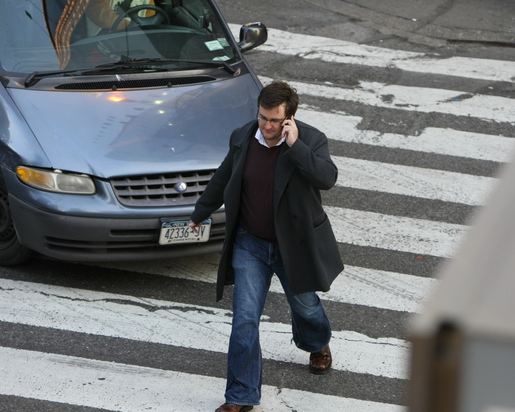The following article is from Guest Blogger, Ward Greunke. He wanted to share this great information with us and our readers. I’ve never thought about the “lift to accept” theory, but it would save lots of hassle if everyone would try it.
Have you ever handed something heavy to someone and asked, “Do you have it?” and just as they say yes, they drop it? The reason for this is that people usually wait for heavy things to be placed in their hands and then confirm verbally that they have it so the other person can let go. Unfortunately, as the first person starts to let go, the other person might not really have a good grip.
This miscommunication happens because the verbal feedback provided does not match the physical feedback. If someone tells you they have the box and yet you are still carrying the weight, there is a mismatch and the potential for an accident. To solve this, box companies should provide a logo that promotes the concept of “Lift to Accept”.
Here is how it works. When someone hands you a box, instead of saying “I have it”, just lift the box out of the other person’s hands. The first person’s hands will immediately drop away when you lift the box and there is no verbal confusion. This works because the first person knows that you have the box because they no longer feel the weight in their hands. Once this happens, they are left holding air and quickly remove their hands. By placing the label below on boxes, box companies can eliminate the mismatch between verbal feedback and physical feedback.
Safety Benefits: Catching vs lifting.
In addition to the minimized confusion, there is also a safety benefit to this technique because people will be better prepared to support the weight. When you are trying to catch something, you prepare for any possible events. Your feet are ready to move, your knees are bent and springy and your arms are ready to help you run. Think of a baseball outfielder trying to guess where the ball will go. Their stance is optimized for movement, not for strength.
When you lift, you focus on a single event. You plant your feet, align your body and make sure that you have a good grip. Think of a weightlifter focusing on a single lift. They position their body for maximum strength. This alignment of the body prepares you to lift heavy objects and can minimize injury by trying to carry something in an awkward position. If you are picking something off a table, you use a lifting response, but if you are catching something, you use a contingency response. In one case, you are being proactive and controlling the situation. In the other case you are being reactive and hope for the best. When you follow “Lift to Accept”, you are positioning your body for maximum strength and personal safety.
The “Lift to Accept” method uses non-verbal feedback as well as better prepares people to carry heavy objects. By showing customers this method to pass items, box companies can help their customers minimize losses caused by dropped material as well as potentially reduce workplace injuries.
Thanks, Ward, for this suggestion. I wonder how many persons utilize this method of lifting items and passing them to the next person. You can read more of Ward’s tips at latentvalue.blogspot.com.
